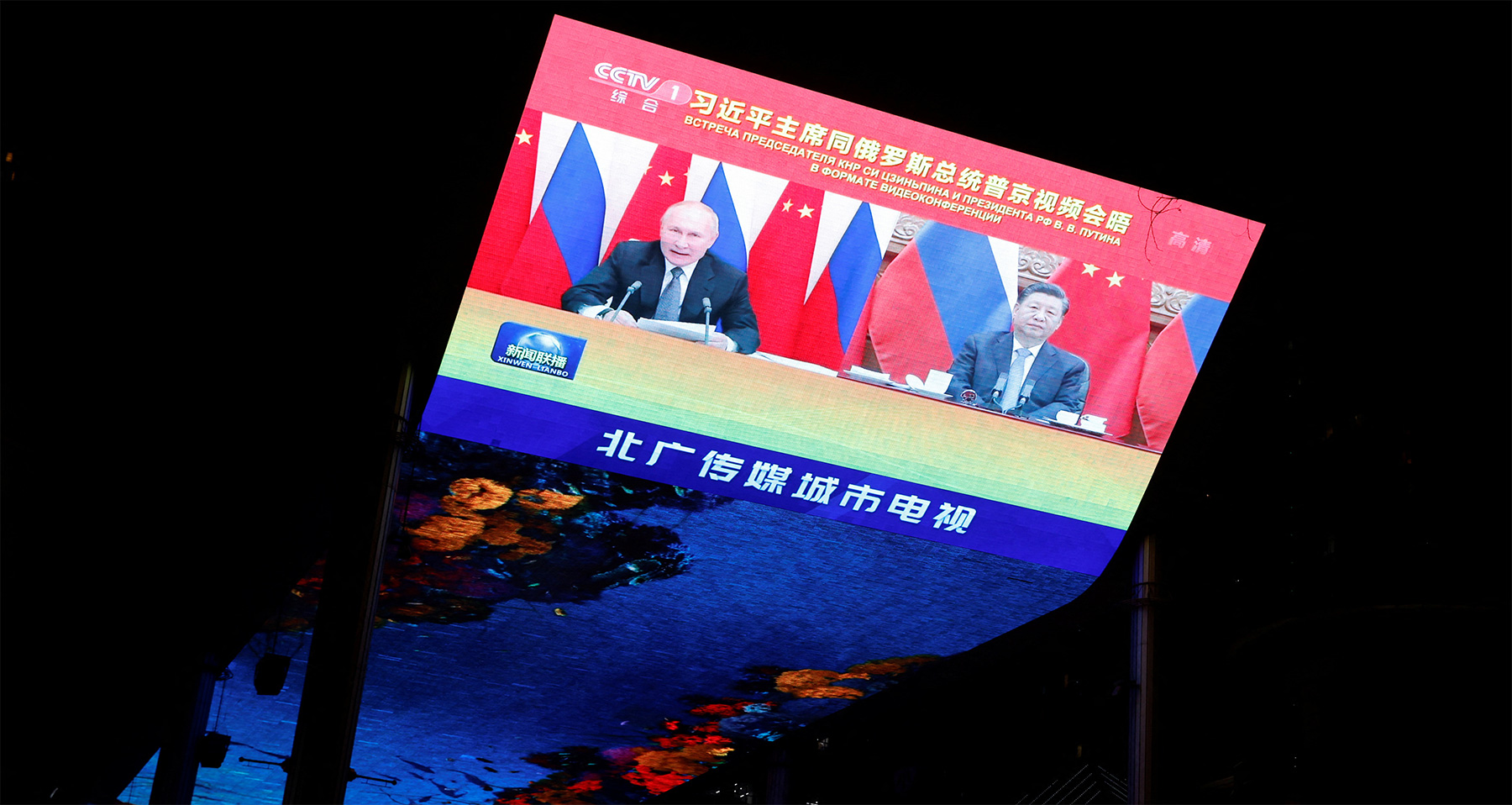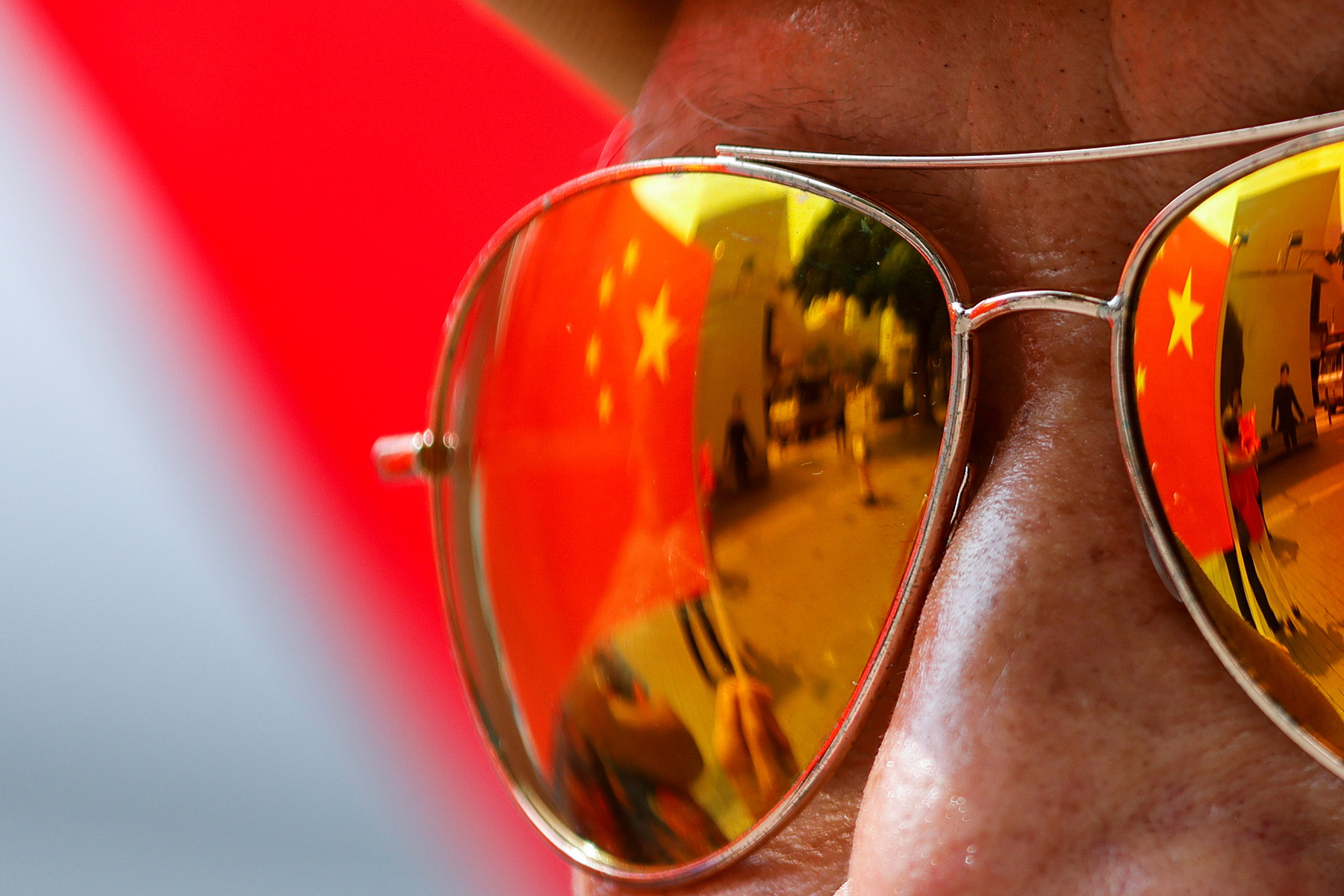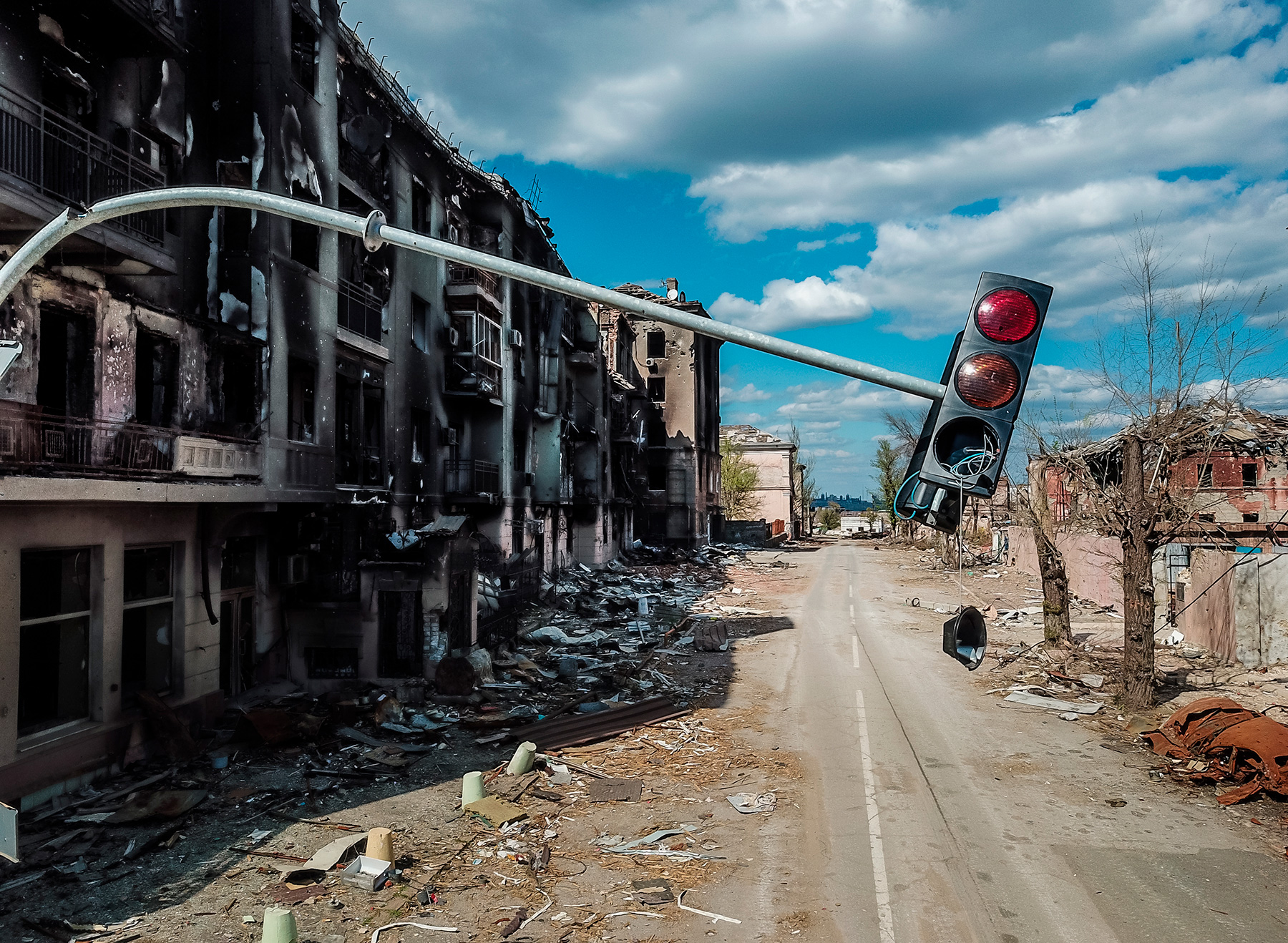July 16 marks the 21st anniversary of the Treaty of Good-Neighbourliness and Friendly Cooperation between the Russian Federation and the People’s Republic of China. Within the contemporary framework of the Russia–China partnership, the treaty has been dubbed the “document of the century” and, judging by the dynamics of the inter-state relations, it stands all chances to become one of the most solid international bilateral treaties of our age, which is particularly valuable at a time when the entire architecture of international relations appears to be close to collapse.
It is highly symbolic that the treaty was signed in the first year of a new millennium, with President of the Russian Federation Vladimir Putin and President of China Jiang Zemin putting pen to paper in Moscow on July 16, 2001. The document epitomized the many centuries of bilateral relations. Not only does it reflect four centuries of good neighbourliness and friendship between the peoples of the two countries but it also proclaims a new model of relations—one that aligns with the fundamental national interests of the two states and the hopes of their peoples. The model also plays an important role in maintaining a stable multipolar world order, ensuring security and stability. Bilateral relations were proclaimed to be free from ideological biases and prejudices. The Treaty envisaged mutual respect for the historical paths and political systems. Cooperation between the two sides was to be reinvigorated by mutual political and economic interests. Russia–China relations were now based on equality, consideration for each other’s interests, and freedom from current political and ideological circumstances.
Personal relations between the leaders of the two states play a vital role in shaping and bolstering such a close partnership. As of the time of writing, Vladimir Putin and Xi Jinping have met 38 times while holding frequent telephone conversations. This creates a personal relationship, ensures dynamically developing relations and allows any topical issues to be dealt with at the highest level. The power vertical in Russia, and particularly that in China, ensure top-level decisions are effectively enforced. Consequently, Russia and China enhance their political dialogue year in year out. Strategic relations of trust between heads of state constitute a political advantage for the entire system of Russia–China relations.
The leaders of Russia and China said in their addresses that the nations of BRICS stand for joint efforts to promote peace and stability around the world. BRICS enjoys support of many nations in Asia, Africa and Latin America. The five countries seek independent foreign policies and continue making active contributions to a truly multipolar system of international relations based on international law and on the key principles of the UN Charter. The Russia–China strategic partnership enshrined in the 2001 Treaty of Good-Neighbourliness and Friendly Cooperation between the Russian Federation and the People’s Republic of China may serve as a model of such relations between states.
The day of July 16 marks the 21st anniversary of the Treaty of Good-Neighbourliness and Friendly Cooperation between the Russian Federation and the People’s Republic of China. Within the contemporary framework of the Russia–China partnership, the treaty has been dubbed the “document of the century” and, judging by the dynamics of the inter-state relations, it stands all chances to become one of the most solid international bilateral treaties of our age, which is particularly valuable at a time when the entire architecture of international relations appears to be close to collapse.
Yet, we should not forget that Russia and China have arrived at the current level of strategic partnership following a centuries-long path full of many trials and regrettable errors. Nor should we forget that the two largest states of Eurasia initially went through a difficult period in the 17th century, when it came to establishing first political and economic relations, a process that culminated in the 1689 Treaty of Nerchinsk. We should also keep in mind that China, like today, supported the “new Russia” in the early 18th century, when the confrontation between Russia and Europe heated up and the Great Northern War (1700–1721) broke out. For instance, imports of Chinese goods (primarily, fabrics) played an important role in the formation of the Russian army, which emerged victorious under the leadership of Peter the Great [1]. Since then, the relations between the two states have not suffered protracted interruptions, remaining generally positive for two centuries. In mid-19th century, treaties establishing Russian and Chinese borders were signed, and the border issue was finally settled after the demarcation of 2004–2008.
The turbulent 20 th century had varying consequences for the relations between Russia and China. Times of strong friendship were interrupted by acute but short conflicts, typically rooted in ideology [2]. The partnership between the Soviet Union and the Kuomintang under Sun Yat-sen was cut short in 1927 by a sudden attack on Chinese communists organized by his successor Chiang Kai-shek. A new thaw that marked the relations during the Second World War, when the Soviet Union and the Kuomintang established allied relations, which was ultimately enshrined in the 1945 Treaty, smoothly evolved into a closer friendship and alliance when the People’s Republic of China was established, with the Sino-Soviet Treaty of Friendship, Alliance, and Mutual Assistance signed in 1950.
However, the honeymoon decade of the 1950s was followed by an era of ideological confrontation that eclipsed the 1960s and 1970s. This period of a sudden cold spell, at times turning into animosity between the neighbours, resulted in the tragic events at Damansky Island in 1969, an incident that showed how ideological differences can destroy constructive interactions between friendly neighbouring states in virtually every area, from geopolitics to cultural ties, all in a matter of a few short years.
Since the early 1980s, this negative experience helped both parties come to the firm conviction that there is no alternative to good-neighbourly relations between the two peoples and countries. General consulates of both states were reopened in 1986. The historic visit of Soviet leader Mikhail Gorbachev to Beijing in 1989 marked a rapid and unfaltering development of friendly relations between Russia and China [3]. In 1992, the two states officially proclaimed their friendly relations; and they announced a constructive partnership in 1994. Two years later, in 1996, Moscow and Beijing signed a Declaration proclaiming their determination to foster an equal and trust-based partnership with a view to strategic interactions in the 21 st century. This declaration paved the way for the Treaty of 2001.
It is highly symbolic that the treaty was signed in the first year of a new millennium, with President of the Russian Federation Vladimir Putin and President of China Jiang Zemin putting pen to paper in Moscow on July 16, 2001. The document epitomized the many centuries of bilateral relations. Not only does it reflect four centuries of good neighbourliness and friendship between the peoples of the two countries but it also proclaims a new model of relations—one that aligns with the fundamental national interests of the two states and the hopes of their peoples. The model also plays an important role in maintaining a stable multipolar world order, ensuring security and stability. Bilateral relations were proclaimed to be free from ideological biases and prejudices. The Treaty envisaged mutual respect for the historical paths and political systems. Cooperation between the two sides was to be reinvigorated by mutual political and economic interests. Russia–China relations were now based on equality, consideration for each other’s interests, and freedom from current political and ideological circumstances.
The Treaty legally enshrined the description of mutual relations as “the strategic cooperative partnership of equality and trust” proclaimed in 1996. It also formalized mutual support in protecting national unity and territorial integrity, confirming bilateral commitment to refrain from first use of nuclear weapons against each other or targeting each other with strategic nuclear missiles. It also formulated the principle of respect for choosing one’s own path of political, economic, social, and cultural development, and envisaged immediate contacts in case of threat of an aggression against one of the parties.
Besides, the Treaty contains an important legal formula, stating intent “to develop the friendship between the people of the two countries from generation to generation” (a statement that has never been used in any other international instrument). The treaty calls upon the parties to always remain friends, good neighbours, and dependable partners, and to never be enemies. This legal wording was not present even in allied treaties between the USSR and China, and it makes it possible to say that the China–Russia friendship enjoys a status higher than that of an alliance.
June 5, 2019—the year of the 70th anniversary of the People’s Republic of China and of the 70th anniversary of diplomatic relations between Russia and the People’s Republic of China—saw the adoption of a Joint Statement on Developing a Comprehensive Strategic Partnership Entering a New Era. Russia said it highly valued the fact that relations between the two states had reached an unprecedentedly high level.
Personal relations between the leaders of the two states play a very important role in shaping and bolstering such a close partnership. As of the time of writing, Vladimir Putin and Xi Jinping have met 38 times while holding frequent telephone conversations. This creates a personal touch, ensures dynamically developing relations and allows any topical issues to be dealt with at the highest level. The vertical of power in Russia, and particularly that in China, ensure top-level decisions are effectively enforced. Consequently, Russia and China enhance their political dialogue year in year out. Strategic relations of trust between heads of state constitute a political advantage for the entire system of Russia–China relations.
Over the past year, the relations between China and Russia have faced unprecedented geopolitical and economic challenges. In 2021, Russia’s relations with the West deteriorated sharply over the situation in Ukraine. Even with the heightened international tensions, China has demonstrated its readiness to lend diplomatic support to Russia once again. On June 28, 2021, Russia and China adopted a Joint Statement marking the 20th anniversary of the Sino-Russian Treaty and announced its prolongation for five years.
Finally, a Joint Russia–China statement on International Relations Entering a New Era and Global Sustainable Development was signed on February 4, 2022, following talks between Vladimir Putin and Xi Jinping in Beijing.
Back in August 1997, Russia and China signed a Joint Declaration on a Multipolar World and the Establishment of a New International Order, advocating multilateralism ever since. In their Joint Statement of February 4, 2022, the parties announced that “no State can or should ensure its own security separately from the security of the rest of the world and at the expense of the security of other States.” The parties called for a new kind of relations between world powers—operating on the basis of mutual respect, peaceful coexistence and mutually beneficial cooperation.
The Statement also emphasized that the inter-state relations are superior to political and military alliances of the Cold War era, that friendship between the two states knows no limits, that there are no “forbidden” areas of cooperation, that enhancing strategic bilateral cooperation is neither aimed against third countries nor affected by the evolving international environment and circumstantial changes in third countries. Vladimir Putin said that these relations have become “a paragon of efficiency, responsibility, and aspiration for the future.” Such words have established unprecedentedly close political relations between Russia and China, and the subsequent events of February 2022 showed that it was these relations that took the world into a new era.
From the first days of the conflict, China’s response to the events in Ukraine has been quite positive for Russia. China is consistent in its stance that the conflict was provoked by NATO’s expansion, while the sanctions that the West has imposed on Russia are at odds with international law and they are provoking a global economic crisis. Besides, Chinese diplomats stress that the conflict has to be resolved through speedy talks and that historical roots of the conflict also need to be taken into account. These statements are quite in alignment with Russia’s stance.
In a telephone conversation on June 15, 2022, the Russian and Chinese leaders reaffirmed the successful development of Russia–China relations, notwithstanding a broad range of global changes. At the same time, the Chinese President reaffirmed Beijing’s independent stance on the Ukrainian issue with account for historical facts and realities.
The telephone conversation that took place on Xi Jinping’s birthday also happened to be on the eve of the key Russia–China session at the St. Petersburg International Economic Forum on June 16. Over 40 Chinese companies (ten of them with annual revenues of over RUB 20 bn.) participated in the Russia–China business dialogue moderated by the heads of the Institute of Far Eastern Studies (now the Institute of Chinese and Contemporary Asian Studies of the Russian Academy of Sciences) and the Union of Chinese Entrepreneurs in Russia. The delegates from China made no secret of the fact that they had come to Russia with the explicit goal of filling the niches that the West had vacated in the Russian economy. Their business areas were selected to fit with Russia’s current needs: engineering, industrial equipment, automobile spare parts, petrochemical equipment, agricultural products, etc.
In his Address at the Forum’s Plenary Session on June 17, the Russian President emphasized that Russia finds it “interesting and important to cooperate with China, but it does not mean that Beijing should support Moscow in everything: China has its interests, and we need to respect them.” In turn, the Chinese leader, addressing the Forum’s attendees via video link, confirmed that “today, China–Russia cooperation in every area is on the rise […] it evidences high stress resilience and internal potential of China–Russia cooperation.”
Announcements made at the “Russia–China Business Dialogue” session included the establishment of a Coordination Council for China involving Russia’s leading academic centres and supported by the Presidential Executive Office, the Government, and the Security Council of the Russian Federation. Those in attendance were also informed that the Institute of Oriental Studies had been renamed the Institute for Chinese and Contemporary Asian Studies under the auspices of the Russian Academy of Sciences, which certainly evidences Russia’s great attention to Russia–China relations.
Therefore, the St. Petersburg International Economic Forum once again demonstrated the stability of and mutual interest in a steady development of practical cooperation between Russia and China. Today, political arrangements and joint statements are successfully transformed into economic outcomes. China has become the largest consumer of Russian energy resources, and the two governments are involved in intensive talks on establishing new routes for transporting Russia’s oil and gas into China, and these talks could produce agreements as early as this year. The reverse flow of commodities is perking up as well: in particular, an announcement on the resumption of deliveries of spare parts for civilian aircraft from China was made immediately after the St. Petersburg International Economic Forum. Cooperation in the automobile industry is also fostered. Sales of Chinese smartphones on the Russian market have surpassed those of the traditional leaders, American and South Korean brands, for the first time this year. All these developments mean that, despite sanctions pressure, Chinese companies will continue to increase two-way trade with Russia as part of the cooperation between the two states.
Bilateral military and political cooperation is on the rise. The sharply expanded geography of joint military exercises and drills is, alongside with military-technical cooperation, proof enough of this: this year, such exercises have been held in the Arabian Sea (January), the Sea of Japan, and the South China Sea (May). In July, reports surfaced that Russia, China and Iran were preparing for large-scale joint exercises in Latin America at the invitation of Venezuela.
Global cooperation between Russia and China is also reflected in their common stances in international platforms. In particular, interest in further enhancing Russia–China relations, including taking a common or similar position on issues in international politics, was demonstrated at the 14th BRICS Summit in Beijing on June 22–24, 2022 and at the BRICS Business Forum held as part of the Summit. BRICS, which accounts for 45 per cent of the global population, will overtake G7’s total share in the global GDP in the near future, thus increasing its global influence and becoming the epicentre of multilateral partnership in the interests of universal and equal development. It is by no accident that the Summit was attended by 13 countries in addition to Brazil, Russia, India, China and South Africa (BRICS+).
The leaders of Russia and China said in their addresses that the nations of BRICS stand for joint efforts to promote peace and stability around the world. BRICS enjoys support of many nations in Asia, Africa and Latin America. The five countries seek independent foreign policies and continue making active contributions to a truly multipolar system of international relations based on international law and on the key principles of the UN Charter. The Russia–China strategic partnership enshrined in the 2001 Treaty of Good Neighbourliness and Friendly Cooperation between the Russian Federation and the People’s Republic of China may serve as a model of such relations between states.
1. G. N. Romanova, “The Genesis of Russia–China Trade Ties (17th – first third of the 18 th centuries),” Tamozhennaia politika Rossii na Dalnem Vostoke 67, no. 2 (2014): 101–111.
2. L. P. Chernikova, “Russia–China Relations: History and Present,” Problemy vostokovedeniia 68, no. 2 (2015): 42–46.
3. Y. Li, “Mikhail Gorbachev’s Contribution to Normalizing Soviet-Chinese Relations,” Problemy Dalnego Vostoka2 (2021): 66–82.







